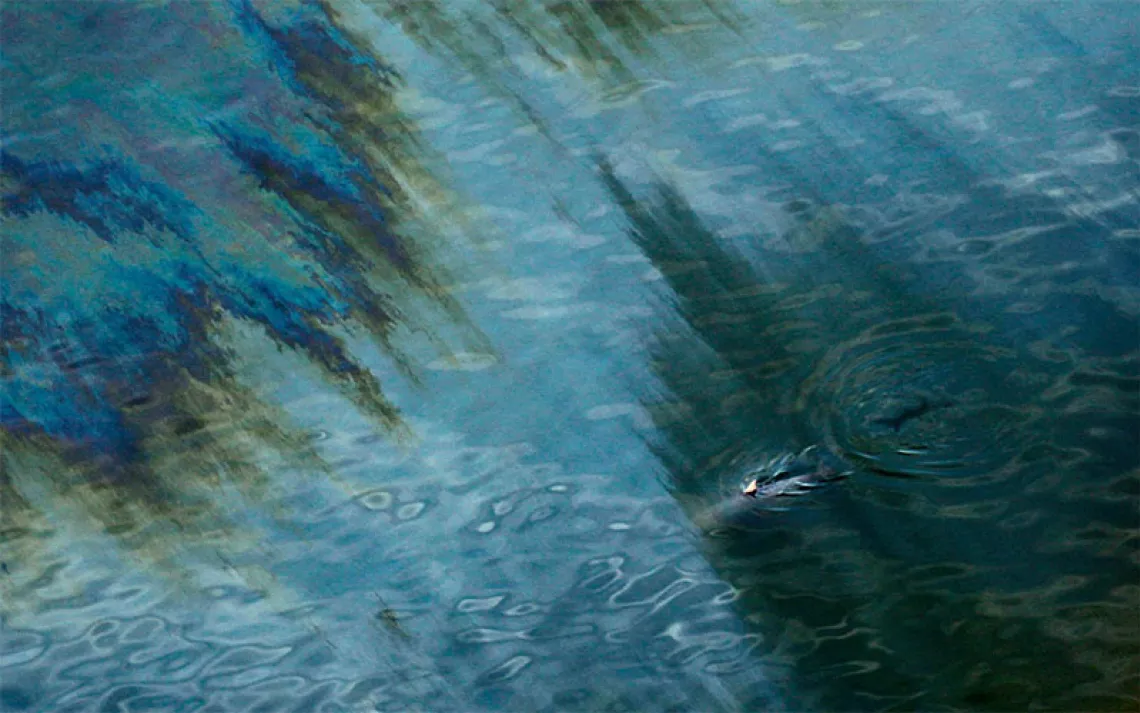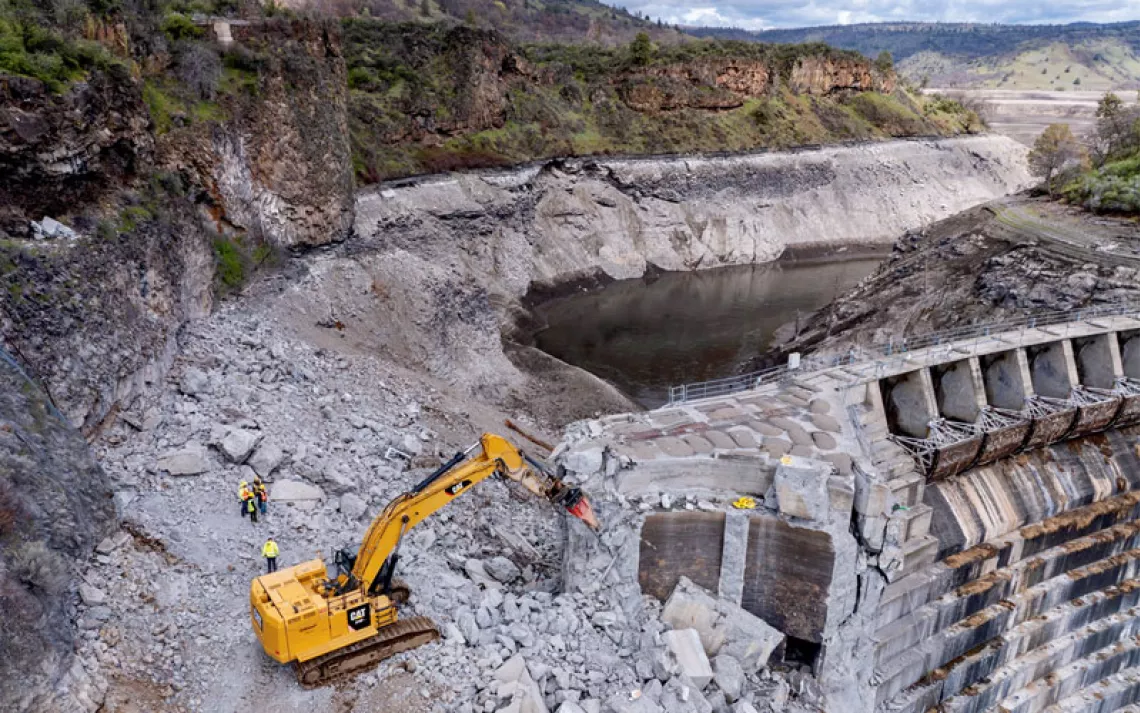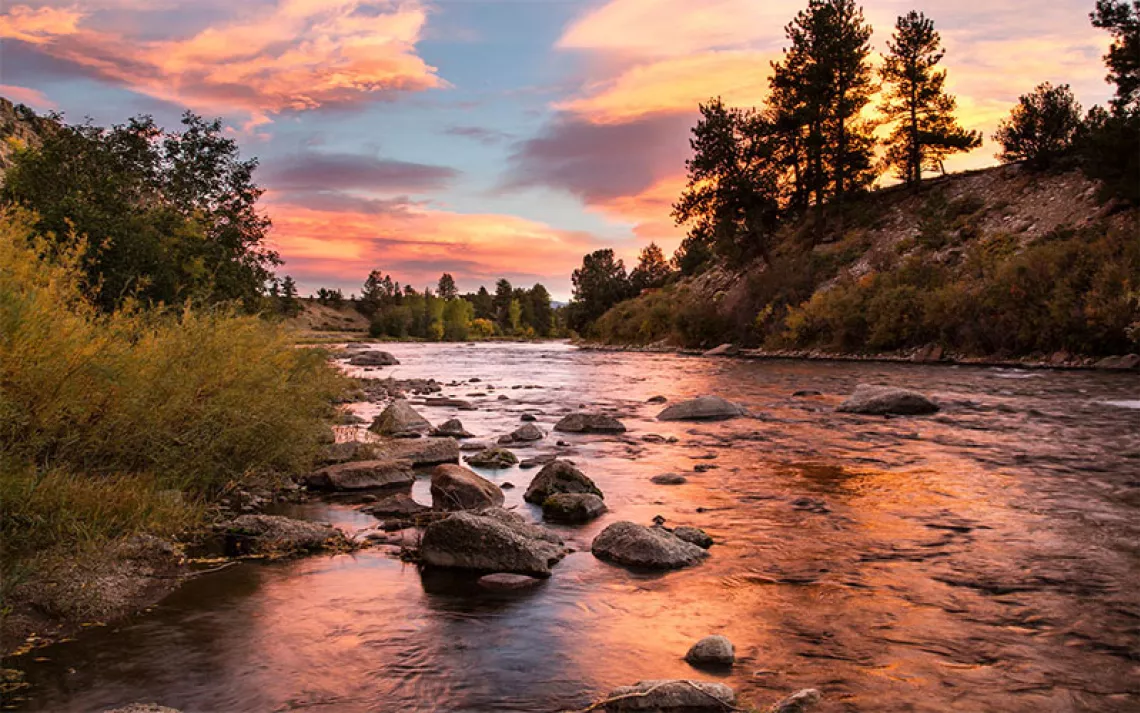Sierra Magazine's Special Issue Celebrating U.S. Rivers
We've ruined too many of our rivers, but a unique law gives us a chance to protect many others

Rivers make America. The United States has more than 3.5 million miles of rivers and streams: bright, blue lines that stitch the continent together. They are a force so elemental that, in many places, rivers' original names have carried forward even through centuries of genocide. The Mississippi, the Missouri, the Allegheny, the Potomac, the Ohio—each of these titles and hundreds more were inherited from Native tongues.
In the 18th and 19th centuries, rivers were the indispensable conduits of commerce and travel. Their flow powered the churn of early northern mills and sped the movement of goods. Today, still, our power plants, our factories, and many of our greatest cities are clustered along riverbanks.
As with so many things, rivers' natural shapes and rhythms coexist uneasily with industry's imperatives. We have bent rivers to humans' will—straight lines being supposedly better than sinuous curves, dams and reservoirs more valuable than free flows—and in the process we have nearly broken many of them. Writer Boyce Upholt spent more than six weeks canoeing the Lower Mississippi (Ojibwe for "great river") and, as he details in "America's River," discovered a waterway that has been "entirely remade, hemmed in by levees three stories tall, bristling with wing dams, its bends paved in concrete."
Such denaturing is more the rule than the exception. In Southern California, "the Los Angeles River is little more than a sprawling drain," Jonathan Hahn writes in "River of Angels," "buried beneath miles of riprap and cinder block walls, hidden behind warehouses and chain-link fence." Across the United States, Katherine Wei reports in "Rivers Run Through Them," thousands of thermoelectric power stations disrupt riverine ecosystems as they discharge billions of gallons of heated water into rivers daily.
Fortunately, U.S. law includes an alternative to such reckless remaking. Fifty years ago, Congress passed the National Wild and Scenic Rivers Act, which established a legal mechanism for preserving rivers in their "free flowing condition" so that "they and their immediate environments shall be protected for the benefit and enjoyment of present and future generations." As Tim Palmer writes in "Untamed Beauty," in the decades since the law was passed, it has been used to protect hundreds of rivers. These include New Mexico's Rio Chama (Tewa for "wrestling pueblo ruin"), the Niobrara (Ponca for "running water") in Nebraska, and California's Tuolumne (the Native American derivation is unclear, but likely refers to people who lived in caves near the river). While the Wild and Scenic Rivers Act can't be used as a lever for forcing the restoration of a river to its natural state, at the very least it serves as an inspiration.
The rivers protected by the law allow us to glimpse how all American rivers once looked. Those still-wild waters let us imagine how our industrialized rivers could be once more, if only we might manage to crack up the concrete embankments, tear out the dams, pull down the levees. Just picture it: rivers running freely to the sea, like they did for millennia, when those first names were bestowed.
This article appeared in the July/August 2018 edition with the headline "Running Waters."
 The Magazine of The Sierra Club
The Magazine of The Sierra Club



